Who was Jacob Lawrence, and why is his Migration Series considered one of America’s most important art collections? If you’re an art teacher or homeschool parent looking to introduce students to influential American artists, Jacob Lawrence should be at the top of your list. His paintings tell the stories of African-Americans during one of the biggest population movements in U.S. history, and students connect with his work immediately.
Jacob Lawrence wasn’t just another artist—he painted the real experiences of black families who moved from the South to the North looking for better lives. His art shows both the struggles and hopes of regular people during this time, making him perfect for classrooms where you want students to think about both art and history.
As one of the most celebrated Harlem Renaissance artists, Jacob Lawrence created art that speaks directly to themes of migration, family, struggle, and hope—experiences that students can relate to regardless of their background. In this guide, you’ll discover Lawrence’s life story, learn about his groundbreaking Migration Series, and find practical ways to bring his work into your classroom or homeschool curriculum.
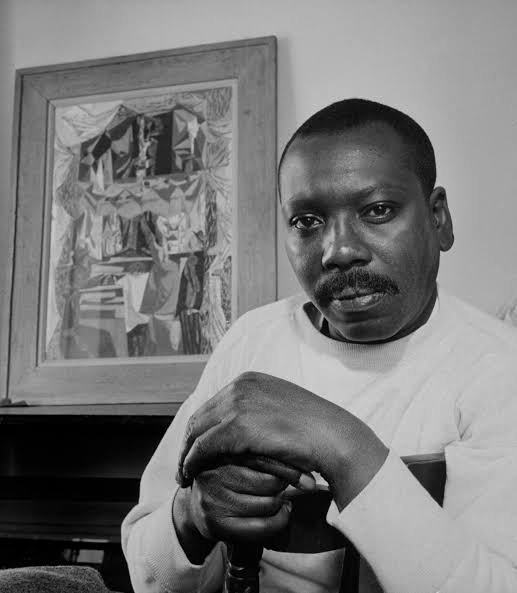
Jacob Lawrence’s Early Life: From Atlantic City to Harlem
Jacob Lawrence was born on September 7, 1917, in Atlantic City, New Jersey, to parents who were part of the Great Migration themselves. His father, Jacob Armstead Lawrence, worked as a railroad cook, while his mother, Rosa Lee Lawrence, took on various jobs to support the family. When Lawrence was just thirteen, his family moved to Harlem, New York—a decision that shaped his entire art career.
This kind of move wasn’t unusual for black families in the early 1900s. Like millions of others, the Lawrence family wanted better jobs and wanted to escape the harsh Jim Crow laws in the South. Young Jacob ended up in the heart of one of America’s most creative communities, right in the middle of all the energy that made the Harlem Renaissance so important.
In Harlem, Lawrence’s art talents were first noticed at the Utopia Children’s Center, where he started taking art classes after school. The community center was a safe place for kids while their parents worked, but it became much more for Lawrence—it’s where he first learned about professional art. The center’s art program was run by Charles Alston, a well-known artist who became one of Lawrence’s most important teachers.
At just fourteen years old, Lawrence started studying at the Harlem Art Workshop, where he met other Harlem Renaissance artists who really influenced his work. Augusta Savage, a famous sculptor who fought for opportunities for black artists, saw Lawrence’s talent and took him under her wing. She taught him technical skills but also showed him how art could be used to create change and express black culture.
The young artist also visited the Metropolitan Museum of Art and the Museum of Modern Art regularly, where he studied works by masters like Pieter Bruegel and Francisco Goya. But it was the Mexican muralists—especially José Clemente Orozco and Diego Rivera—who really shaped his style. Their bold colors and focus on social and political themes matched what Lawrence wanted to say about his own experiences.
By his late teens, Lawrence had developed his own style that made him stand out from other Harlem Renaissance artists. Growing up around both classical art and modern social themes gave him a solid foundation that served him well throughout his career.
Jacob Lawrence’s Artistic Style and Techniques
Jacob Lawrence developed his own style that made his work easy to recognize and great for teaching students. His approach was both smart and easy to understand, mixing complex themes with visual elements that students of all ages can appreciate.
Lawrence’s main technique was using tempera paint, which let him get the bold, flat colors that became his trademark. Unlike oil paints, which can be blended for subtle effects, tempera dries quickly and keeps clean, sharp edges. This choice wasn’t just about looks—it was practical for an artist who often worked on large series of paintings and needed consistency across multiple panels.
The artist used a limited but powerful color palette. He liked primary colors—reds, blues, and yellows—along with earth tones like browns and ochres. This restriction forced him to be creative with color relationships and helped create visual unity across his series. For art teachers, Lawrence’s color choices are perfect for teaching about color theory, emotional impact, and how limitations can actually make creativity stronger.
Lawrence’s composition style came from studying Mexican muralists, but he made it his own. He used geometric shapes and simplified forms to create dynamic figures that seemed to be moving constantly. His people weren’t realistic portraits but rather symbolic representations that captured the essence of human experience. This approach makes his work perfect for teaching students about abstract representation and how artists can show emotion through form rather than just realistic detail.
One of the most impressive things about Lawrence’s technique was his ability to tell complex stories through sequential art. Long before graphic novels became popular in schools, Lawrence was creating visual stories that worked like illustrated books. Each painting in his series could stand alone as a complete work of art, but together they told complete stories about historical events and human experiences.
His brushwork was confident and deliberate, with each stroke serving a purpose in the overall composition. Lawrence rarely used shading to create three-dimensional effects. Instead, he used overlapping shapes, different sized figures, and smart use of negative space to create depth and movement. This technique is great for teaching students that there are many ways to create visual interest beyond realistic representation.
For classroom use, Lawrence’s techniques work well because students at different skill levels can handle them. Young artists can experiment with bold colors and geometric shapes without worrying about realistic proportions or complex shading. His work shows that powerful art doesn’t need to look like a photograph—it needs clear vision and emotional honesty.
The Migration Series: Jacob Lawrence’s Greatest Achievement
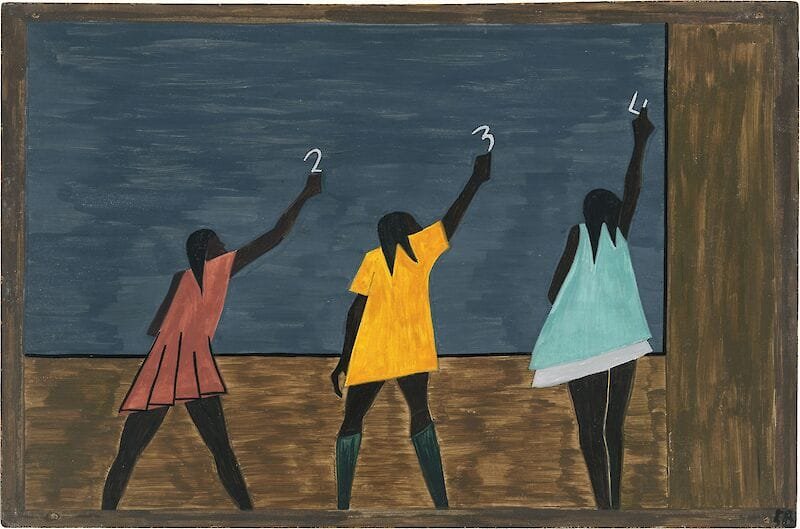
What is the Migration Series?
The Migration Series is Jacob Lawrence’s masterpiece and one of the most important works of art in American history. Created between 1940 and 1941, when Lawrence was just twenty-three years old, this huge project has sixty panels that tell the story of the Great Migration—the movement of over six million black Americans from the rural South to the urban North between 1910 and 1970.
What makes the Migration Series really impressive is that Lawrence planned all sixty panels before he started painting. He would work on all the panels at the same time, putting the same color on each panel that needed it before moving on to the next color. This approach kept the whole series looking consistent and showed that Lawrence really knew how to handle large-scale art projects.
The series is currently split between two major museums: the odd-numbered panels are at the Phillips Collection in Washington, D.C., while the even-numbered panels are at the Museum of Modern Art in New York. This split happened when both museums wanted to buy the work, and Lawrence agreed to divide it so the series would be preserved and accessible to the public.
Each panel in the Migration Series comes with Lawrence’s own captions, which give historical context and help tell the story. These short texts turn the visual art into a great teaching resource that combines artistic expression with historical documentation. For teachers, this approach—visual and textual—makes the Migration Series incredibly valuable for lessons that cross multiple subjects.
Themes and Significance
The Migration Series deals with themes that are still relevant today: economic opportunity, family separation, racial violence, urban challenges, and the search for dignity and freedom. Lawrence didn’t sugar-coat the migration experience—he showed both its hopes and hardships honestly.
The series starts with images of people leaving the South, carrying their belongings and children, trying to escape lynching, poverty, and lack of opportunity. Lawrence painted the violence and discrimination that drove people to leave, including scenes of lynching and economic exploitation. He also showed what drew migrants North: factory jobs, better schools, and the promise of more freedom.
But Lawrence was equally honest about the problems migrants faced in Northern cities. He painted scenes of overcrowded housing, labor conflicts, and continued discrimination. The Migration Series doesn’t present migration as a simple solution to racial problems but rather as a complex human drama with both positive and negative outcomes.
What makes Lawrence’s approach particularly powerful for educational purposes is his focus on universal human experiences within this specific historical context. Students can relate to themes of leaving home, seeking opportunity, facing challenges in new environments, and trying to build better lives for their families. These timeless themes make the Migration Series relevant for discussions about contemporary immigration and demographic changes.
The artistic significance of the Migration Series extends beyond its subject matter. As one of the youngest Harlem Renaissance artists to achieve national recognition, Lawrence demonstrated that powerful art could emerge from personal and community experiences. His success helped pave the way for future generations of African American artists and expanded the definition of what American art could be.
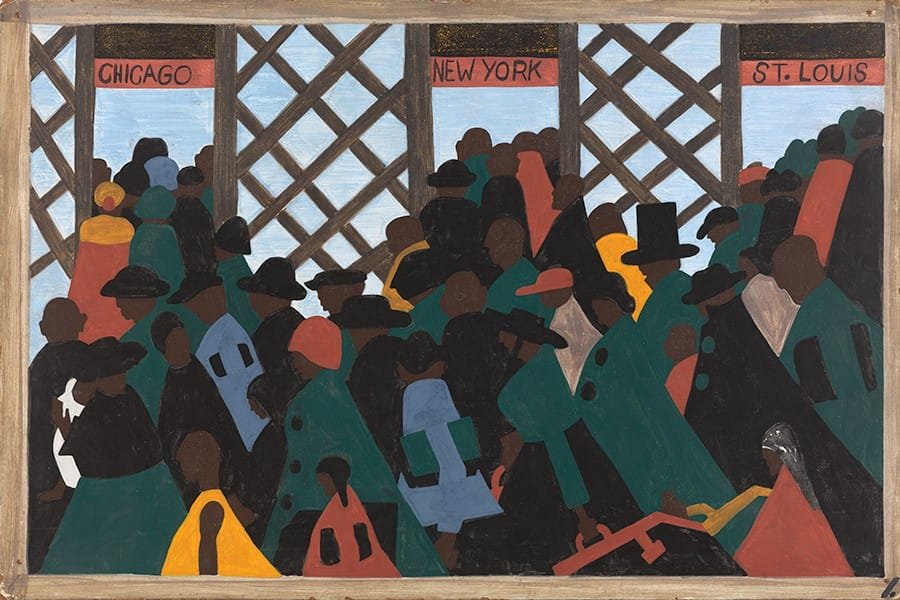
Teaching the Migration Series
The Migration Series offers exceptional educational opportunities for students at all grade levels. For elementary students, teachers can focus on individual panels that tell clear stories, encouraging students to observe details and make predictions about what might happen next. The series’ narrative structure makes it perfect for developing visual literacy skills and understanding how images can tell stories.
Middle school students can engage with the Migration Series as both art and history. The work provides an excellent entry point for discussions about the Great Migration, Jim Crow laws, urbanization, and the economic changes that shaped 20th-century America. Teachers can have students research the historical events depicted in specific panels and create their own visual narratives about family or community histories.
High school students can analyze Lawrence’s artistic techniques, examining how he used color, composition, and symbolism to convey complex emotional and political messages. Advanced students might compare Lawrence’s approach to other Harlem Renaissance artists or explore how his work influenced later social realist painters.
Cross-curricular connections are abundant with the Migration Series. Social studies teachers can use the panels to illustrate demographic changes, economic history, and civil rights developments. English teachers might pair the series with literature from the Harlem Renaissance or contemporary works about migration experiences. Mathematics teachers can use migration statistics to create graphs and analyze population changes.
For art-making activities, students can create their own migration panels, telling stories about their families’ movements or imagined journeys. They can experiment with Lawrence’s tempera techniques and limited color palettes. Younger students might create simple sequential art projects, while older students can tackle more complex narrative series.
The Migration Series also provides opportunities for discussing contemporary migration issues. Students can compare historical and current migration patterns, examining similarities and differences in the reasons people move and the challenges they face. This historical perspective can help students develop empathy and understanding for contemporary immigrant experiences.
Jacob Lawrence’s Role in the Harlem Renaissance
Jacob Lawrence occupies a unique position among Harlem Renaissance artists, representing both the movement’s culmination and its transition into a new era of African American artistic expression. While many associate the Harlem Renaissance with the 1920s, the cultural movement actually extended well into the 1940s, and Jacob Lawrence emerged as one of its most important later voices.
The Harlem Renaissance, spanning roughly from 1918 to the late 1940s, was a flowering of African American culture centered in New York City’s Harlem neighborhood. This cultural renaissance encompassed literature, music, theater, and visual arts, with Harlem Renaissance artists like Aaron Douglas, Augusta Savage, Palmer Hayden, and Romare Bearden creating works that celebrated African American culture while also addressing social and political issues.
What made Lawrence different from many other Harlem Renaissance artists was his age and perspective. Born in 1917, he came of age during the movement rather than helping to establish it. This generational difference gave him a unique viewpoint—he could build upon the foundation laid by earlier Harlem Renaissance artists while bringing fresh eyes to familiar themes.
Lawrence’s mentors were themselves prominent Harlem Renaissance artists. Augusta Savage, who taught him at the Harlem Art Workshop, was a sculptor and educator who fought tirelessly for opportunities for African American artists. Charles Alston, another mentor, was a muralist and illustrator whose work appeared in major publications. These connections placed Lawrence directly within the network of Harlem Renaissance artists, even as his own work began to evolve beyond the movement’s earlier styles.
While many Harlem Renaissance artists focused on celebrating African American culture and challenging negative stereotypes, Lawrence took a more historical and documentary approach. His series paintings—covering figures like Toussaint L’Ouverture, Frederick Douglass, and Harriet Tubman—positioned him as a visual historian of the African American experience. This approach complemented the work of other Harlem Renaissance artists while establishing his own voice.
Lawrence’s success also marked a transition in how Harlem Renaissance artists gained recognition. Earlier artists often struggled for mainstream acceptance and museum representation. Lawrence, however, achieved significant success while still in his twenties, with the Migration Series acquired by major museums and featured in national publications. His success helped open doors for subsequent generations of African American artists.
The collaborative spirit that characterized many Harlem Renaissance artists was evident in Lawrence’s career as well. He worked alongside other artists in shared studios, participated in group exhibitions, and benefited from the community of support that these artists created for each other. This collaborative environment was essential for nurturing talent and creating opportunities in an era when mainstream art institutions often excluded African American artists.
Lawrence’s work also reflected the political consciousness that defined many Harlem Renaissance artists. Like his contemporaries, he understood art as a tool for social change and cultural expression. His paintings addressed issues of racism, economic inequality, and social justice—themes that were central to the broader Harlem Renaissance movement.
As one of the last major Harlem Renaissance artists to emerge during the movement’s peak, Lawrence served as a bridge between the Renaissance generation and the civil rights era artists who would follow. His influence on later African American artists was profound, demonstrating that successful careers were possible and that art could effectively address social and political themes.
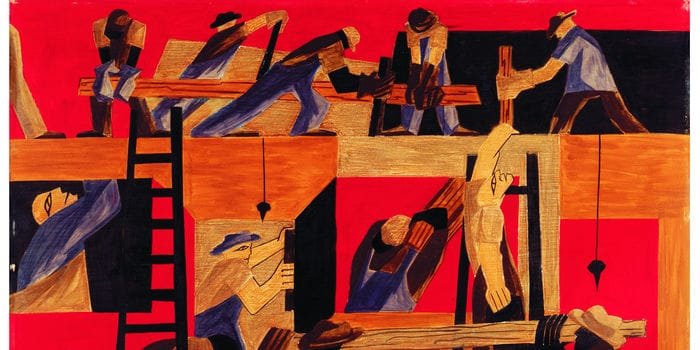
Beyond the Migration Series: Jacob Lawrence’s Other Important Works
While the Migration Series remains Jacob Lawrence’s most famous work, his artistic output was remarkably prolific and consistently powerful throughout his career. Understanding his other major series helps provide a complete picture of his artistic vision and offers additional teaching opportunities for educators seeking to incorporate his work into their curricula.
Lawrence’s approach of creating narrative series began even before the Migration Series. In 1938, at just twenty-one years old, he completed his first major series: forty-one panels depicting the life of Toussaint L’Ouverture, the leader of the Haitian Revolution. This Toussaint L’Ouverture Series demonstrated Lawrence’s early interest in using art to tell the stories of African diaspora heroes who had been largely overlooked by mainstream historical narratives.
The same year, Lawrence created the Frederick Douglass Series, consisting of thirty-two panels that chronicled the life of the famous abolitionist and orator. These panels traced Douglass’s journey from slavery to freedom, his development as a speaker and writer, and his role in the abolitionist movement. For educators, this series offers excellent opportunities to integrate art with American history lessons about slavery, the Underground Railroad, and the Civil War era.
In 1941, shortly after completing the Migration Series, Lawrence created the John Brown Series, twenty-two panels depicting the controversial abolitionist’s life and death. This series showcased Lawrence’s ability to tackle complex historical figures who didn’t fit neatly into heroic narratives. Brown’s violent approach to opposing slavery created moral ambiguities that Lawrence explored through his visual storytelling, making this series particularly valuable for high school discussions about historical interpretation and moral complexity.
Following his service in World War II, Lawrence continued creating significant works that addressed contemporary issues. His War Series, created in 1946-1947, depicted his experiences as a member of the first racially integrated unit in the U.S. Coast Guard. These paintings showed both the camaraderie and tensions of military service, as well as the ongoing realities of racial discrimination even within the armed forces.
In the 1950s and 1960s, Lawrence created several series that addressed the ongoing struggle for civil rights. His Struggle Series, begun in 1954, was planned as thirty panels depicting American history from the Revolutionary War through World War II, focusing on the common people’s experiences rather than famous leaders. Unfortunately, Lawrence completed only five panels before moving on to other projects, but these works demonstrate his continued commitment to telling American history from the perspective of ordinary citizens.
Lawrence’s later career included individual paintings and smaller series that addressed contemporary issues. His paintings of mental hospitals, created after he spent time in a psychiatric facility in the 1950s, brought attention to conditions in mental health institutions. His Builder series celebrated construction workers and the dignity of physical labor, while his Theater series captured the energy and drama of live performance.
Throughout his career, Lawrence also created numerous individual paintings that captured scenes of everyday life in African American communities. These works—depicting everything from children playing to families gathered around dinner tables—provided positive representations of African American life that countered negative stereotypes prevalent in mainstream media.
For educators, Jacob Lawrence’s diverse body of work offers multiple entry points for classroom discussions. Elementary students might focus on his more straightforward narrative panels, while high school students can engage with the complex historical and social issues addressed in his various series. The breadth of his subjects—from historical figures to contemporary social issues—makes his work relevant for multiple curriculum areas and age groups.
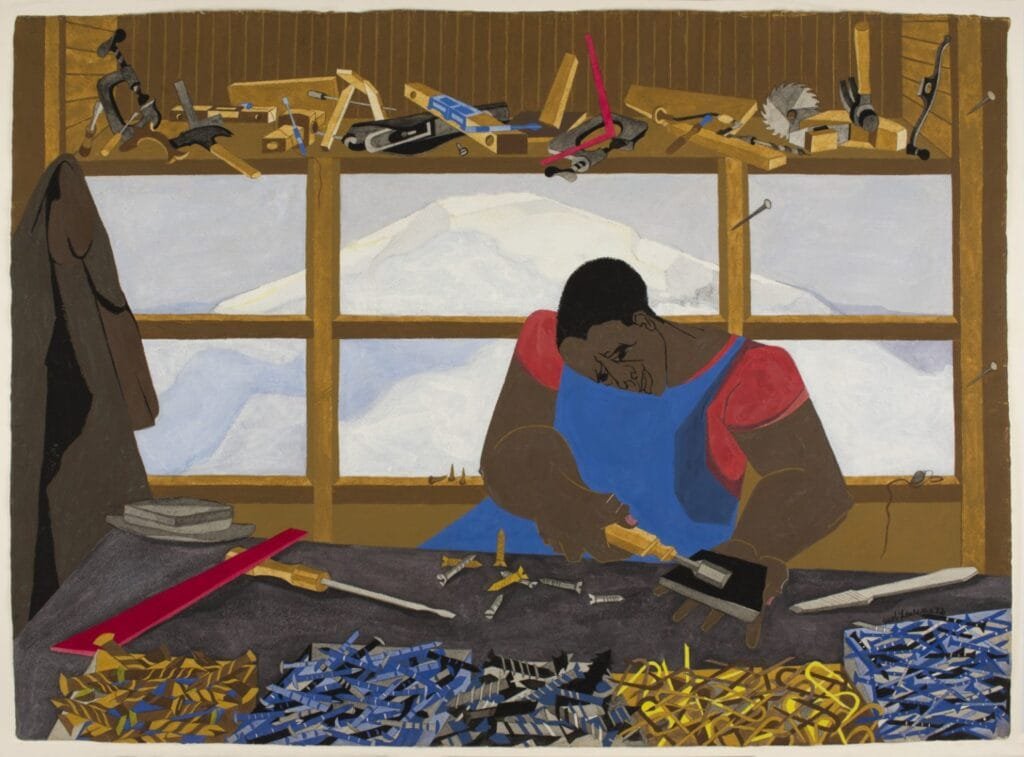
How to Teach Jacob Lawrence to Students: Lesson Plans and Activities
Teaching Jacob Lawrence to students offers incredible opportunities to integrate art, history, and social studies while developing critical thinking skills. His work is particularly valuable because it addresses themes that remain relevant today while using artistic techniques that students can understand and copy.
Age-Appropriate Approaches
Elementary Level (Grades K-5): Focus on storytelling and visual observation
Young students respond well to Lawrence’s narrative approach to art. Begin by showing individual panels from the Migration Series and ask students to describe what they see. Encourage them to notice details: What are people carrying? What expressions do they have? What colors did Lawrence use?
Create simple storytelling activities where students arrange panels in sequence and predict what might happen next. This develops visual literacy skills while introducing historical concepts at an age-appropriate level. Elementary students can also explore Lawrence’s bold color choices, learning about primary colors and how artists use color to create mood and emotion.
For hands-on activities, provide tempera paints (Lawrence’s preferred medium) and have students create their own simple narrative panels. They might tell stories about their families, their communities, or completely imagined stories. Keep the focus on bold colors and clear storytelling instead of realistic details.
Middle School (Grades 6-8): Historical context and social themes
Middle school students can engage more deeply with the historical context of Jacob Lawrence’s work. Introduce the Great Migration as a historical phenomenon, using Lawrence’s panels to illustrate the experiences of migrants. Students can research specific historical events depicted in the Migration Series and create presentations that combine Lawrence’s visual interpretations with historical facts.
This age group can also begin exploring the social justice themes in Lawrence’s work. Discuss concepts like discrimination, economic opportunity, and family separation in age-appropriate ways. Have students compare historical migration experiences with contemporary immigration stories, developing empathy and understanding for people who are facing similar challenges today.
Art-making activities for middle schoolers can be more complex. Students can create their own multi-panel narratives about historical events or personal experiences. Introduce basic composition principles and discuss how Jacob Lawrence used geometric shapes and simplified forms to create powerful images.
High School (Grades 9-12): Artistic techniques and cultural impact
High school students can analyze Lawrence’s work from multiple perspectives: artistic, historical, and cultural. Examine his painting techniques in detail, discussing how his limited color palette and geometric compositions create visual impact. Compare his style to other artists of his era and explore how his work fits within broader art historical movements.
Advanced students can research the Harlem Renaissance and Jacob Lawrence’s role within this cultural movement. They can analyze how his work both reflected and influenced social attitudes about race, migration, and American identity. Encourage students to consider how artists can serve as social commentators and agents of change.
Hands-On Activities
Create a Migration Story in Panels
Students research a migration story—either historical or contemporary—and create a series of 4-6 panels telling that story. This could be about their own family’s migration experience, a historical migration (like the Dust Bowl or Irish immigration), or contemporary refugee stories. Emphasize the importance of research and respectful representation.
Explore Tempera Painting Techniques
Set up a tempera painting station where students can experiment with Lawrence’s preferred medium. Have them practice creating bold, flat colors and clean edges. Challenge them to use only primary colors plus black and white, following Lawrence’s limited palette approach.
Cross-Curricular History Projects
Partner with social studies teachers to create projects that combine artistic creation with historical research. Students might create visual timelines of the Great Migration, design museum exhibits about Harlem Renaissance artists, or develop presentations that use Lawrence’s work to illustrate historical concepts.
Discussion Questions for Students
- How does Jacob Lawrence use color to create mood in his paintings?
- What stories do these paintings tell, and how do they make you feel?
- How might these migration experiences compare to immigration stories today?
- What makes Jacob Lawrence’s work different from photography in telling historical stories?
- How can artists serve as historians and social commentators?
- What would you include in a visual story about your community or family?
The key to successfully teaching Jacob Lawrence is connecting his artistic achievements to the broader themes and skills you want students to develop. His work provides a perfect bridge between art appreciation, historical understanding, and contemporary social awareness—making it an invaluable addition to any art education program.
Jacob Lawrence’s Lasting Impact on American Art
Jacob Lawrence’s influence on American art extends far beyond his own remarkable body of work. His success as one of the most celebrated Harlem Renaissance artists helped establish new possibilities for African American artists and changed how mainstream institutions viewed and valued diverse artistic voices.
Lawrence’s impact began early in his career when, at age twenty-three, he became the first African American artist to be represented by a major New York gallery. This breakthrough opened doors not just for Lawrence but for other African American artists who had previously struggled to gain representation in the mainstream art world. His success demonstrated that there was both artistic merit and market demand for work that addressed African American experiences and perspectives.
The acquisition of the Migration Series by major museums—the Museum of Modern Art and the Phillips Collection—marked a turning point in museum collecting practices. These institutions’ commitment to Lawrence’s work signaled a broader recognition that American art history was incomplete without the contributions of African American artists. This precedent influenced collecting decisions for decades to come and helped establish the importance of diverse perspectives in major art collections.
Lawrence’s approach to narrative art also influenced subsequent generations of artists. His technique of creating cohesive series that told complex stories through visual means predated and helped establish the legitimacy of sequential art forms that would later include graphic novels and other narrative visual media. Contemporary artists continue to draw inspiration from his ability to combine artistic sophistication with accessible storytelling.
In the realm of art education, Lawrence’s work has become a cornerstone of inclusive curriculum development. His paintings provide educators with powerful tools for teaching not just art techniques and history, but also social studies, literature, and critical thinking skills. The integration of his work into educational settings has helped generations of students understand that art can serve as both creative expression and social commentary.
Lawrence received numerous honors throughout his career, including the National Medal of Arts in 1990, awarded by President George H.W. Bush. He was elected to the American Academy of Arts and Letters and received over twenty honorary degrees from universities across the country. These accolades helped cement his position as one of America’s most important artists and brought continued attention to his work and its themes.
Perhaps most importantly, Lawrence’s career demonstrated the power of art to bridge cultural divides and create understanding across different communities. His work has been exhibited internationally and continues to resonate with audiences regardless of their background. The universal themes in his art—family, struggle, hope, and the search for opportunity—speak to fundamental human experiences that transcend specific cultural contexts.
When Jacob Lawrence died in 2000 at age eighty-two, he left behind not just a remarkable body of work but also a legacy of artistic integrity and social consciousness that continues to influence contemporary artists. His foundation, established to support emerging artists, continues his commitment to nurturing new talent and ensuring that diverse voices have opportunities to be heard in the art world.
Today, Lawrence’s influence can be seen in the work of contemporary artists who use their art to address social justice issues, tell historical narratives, and represent underrepresented communities. His example continues to inspire artists to see their work as having the potential for social impact beyond aesthetic achievement.
Jacob Lawrence Resources for Teachers and Students
For educators seeking to incorporate Jacob Lawrence’s work into their curricula, numerous high-quality resources are available to support lessons and activities. These resources range from scholarly publications to interactive online tools, providing options for different grade levels and learning objectives.
Essential Books and Publications
“Jacob Lawrence: The Migration Series” published by the Museum of Modern Art provides analysis of his most famous work, including historical context and detailed examinations of individual panels. “Over the Line: The Art and Life of Jacob Lawrence” by Peter T. Nesbett offers a thorough biographical overview suitable for teacher background reading and advanced student research.
For younger students, “The Great Migration: An American Story” by Lawrence himself, with a poem by Walter Dean Myers, adapts the Migration Series into a picture book format that makes the work accessible to elementary-age children while maintaining its powerful impact.
Museum and Online Resources
The Phillips Collection in Washington, D.C., and the Museum of Modern Art in New York both maintain extensive online collections featuring high-resolution images of Lawrence’s work along with educational materials. These museums offer virtual tours and educational resources specifically designed for classroom use.
The Smithsonian American Art Museum provides online resources about Jacob Lawrence, including video interviews, lesson plans, and interactive activities. Their educational materials are organized by grade level and include assessment tools for teachers.
Documentary Films and Videos
“Jacob Lawrence: An Intimate Portrait” offers insight into the artist’s life and working methods through interviews and studio footage. For classroom use, shorter documentary segments are available through educational video providers and can be particularly effective for introducing students to Lawrence’s personality and artistic process.
Lesson Plan Resources
The Kennedy Center’s ArtsEdge program provides detailed lesson plans that integrate Jacob Lawrence’s work with music, literature, and social studies curricula. These interdisciplinary approaches help teachers make connections across subject areas while maintaining focus on artistic learning objectives.
The National Gallery of Art offers downloadable lesson plans specifically focused on teaching with the Migration Series, including discussion questions, activities, and assessment rubrics appropriate for different grade levels.
Digital Tools and Interactive Resources
Several museums have developed interactive online experiences that allow students to explore Lawrence’s work in detail. These tools often include zoom features for examining brushwork and technique, as well as side-by-side comparisons of related panels within series.
When selecting resources for classroom use, consider your students’ age and ability levels, available technology, and curriculum objectives. Lawrence’s work offers such rich possibilities for learning that it’s often better to focus deeply on a few panels or themes rather than trying to cover everything superficially.
Remember that Lawrence’s work provides opportunities for respectful, age-appropriate discussions about difficult historical topics. Prepare students for the serious themes in his work while emphasizing the hope and resilience that characterize much of his artistic vision. His legacy as both artist and educator makes his work particularly valuable for inspiring students to see art as a tool for understanding and improving the world around them.
Conclusion
Jacob Lawrence’s remarkable journey from a young student at the Harlem Art Workshop to one of America’s most celebrated artists demonstrates the power of mentorship, community support, and artistic vision. His work continues to educate, inspire, and challenge viewers more than eight decades after he first picked up a paintbrush. For today’s art educators, Lawrence’s example provides both practical teaching tools and inspiration for helping students understand art’s potential to document history, express identity, and advocate for social change.
Whether you’re introducing elementary students to the basics of storytelling through art or challenging high school students to analyze complex social themes, Jacob Lawrence’s work offers endless opportunities for learning and growth. His legacy reminds us that art education is never just about technique—it’s about helping students find their voices and understand their place in the larger human story.
Through his Migration Series and other works, Lawrence showed that art can serve as both mirror and window—reflecting our own experiences while helping us understand others. In classrooms across America, his paintings continue to spark conversations about history, identity, justice, and hope. For teachers seeking to make art education relevant and meaningful, Jacob Lawrence’s work provides a perfect starting point for connecting artistic skill with social awareness and historical understanding.
Liked this article? Read this article about Grant Wood or this one about Romare Bearden.
Article Sources & References:
- Introduction | Jacob Lawrence: The Migration Series
- Jacob Lawrence: The Migration Series
- A Closer Look at Jacob Lawrence’s “Migration Series,” the Masterpiece He Made at 23
- The Migration Series – Wikipedia
- Chronology | Jacob Lawrence: The Migration Series
- Smarthistory – Jacob Lawrence, The Migration Series
- Jacob Lawrence: the migration series
- Jacob Lawrence and the Harlem Renaissance
- Jacob Lawrence – Wikipedia
- Meet Jacob Lawrence – Visions of Harlem
- Harlem Renaissance Archives – JSTOR Daily
- Jacob Lawrence Paintings, Bio, Ideas | The ArtStory
- Jacob Lawrence | Smithsonian Ameraican Art Museum
- Visual Artists Influenced by the Harlem Renaissance
- About Jacob Lawrence | Jacob Lawrence: The Migration Series
- Harlem Renaissance | National Gallery of Art
- Jacob Lawrence | EBSCO Research Starters


Leave a Reply